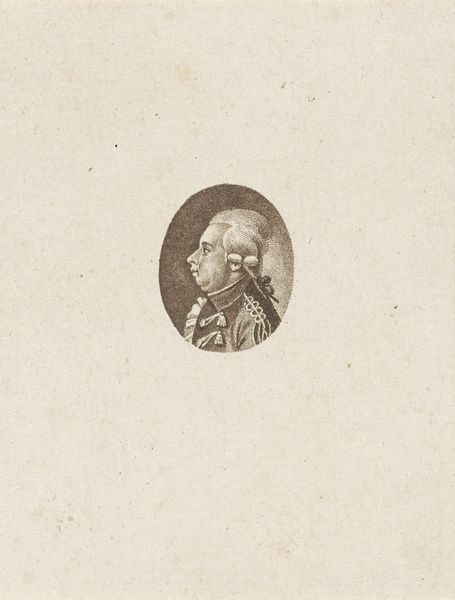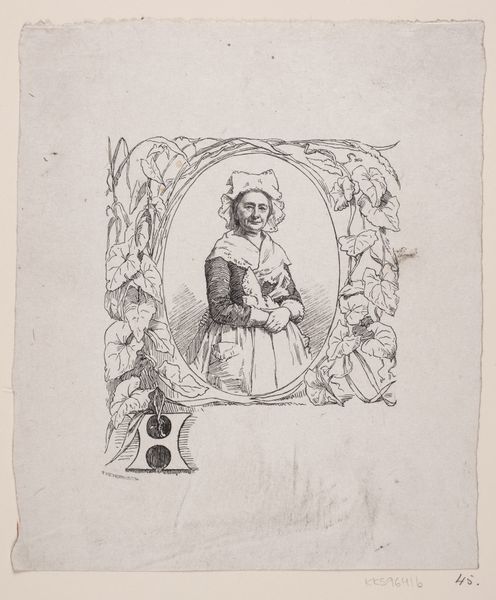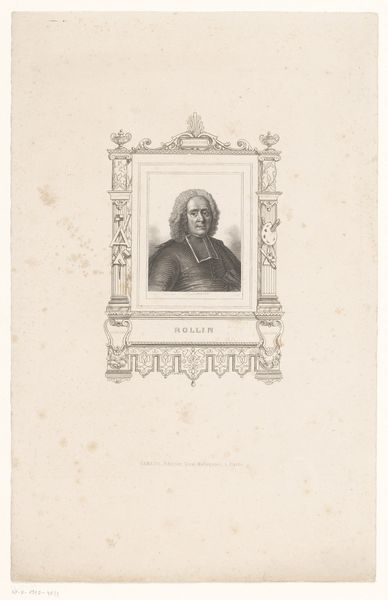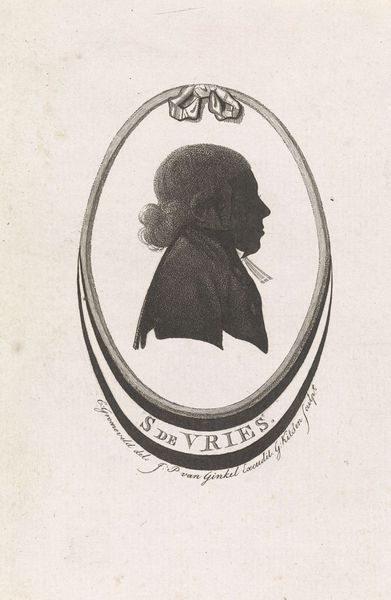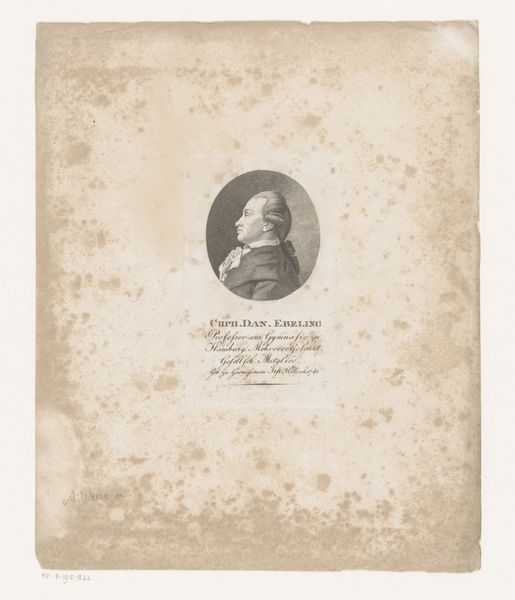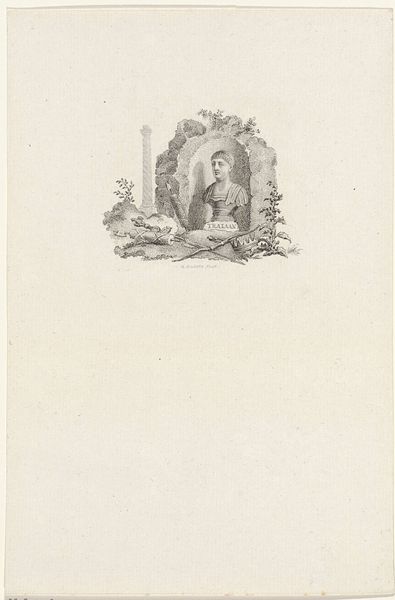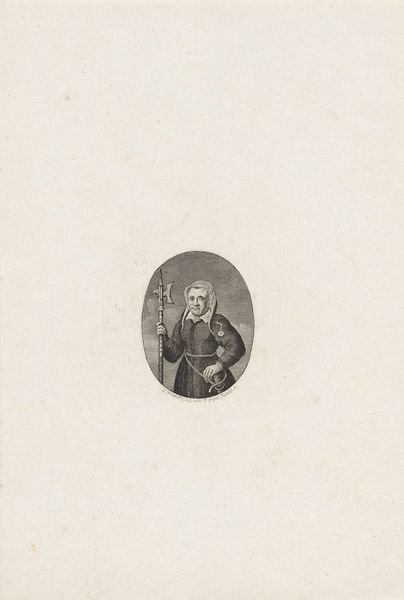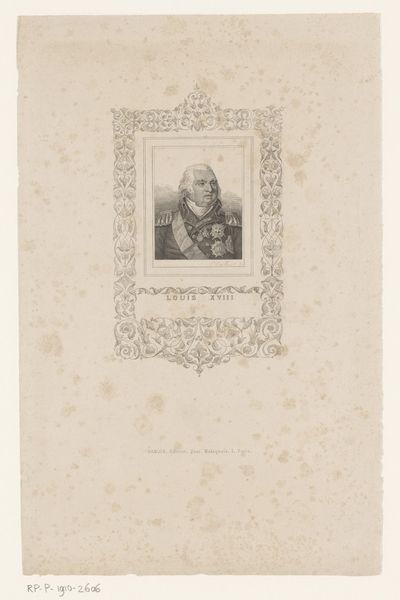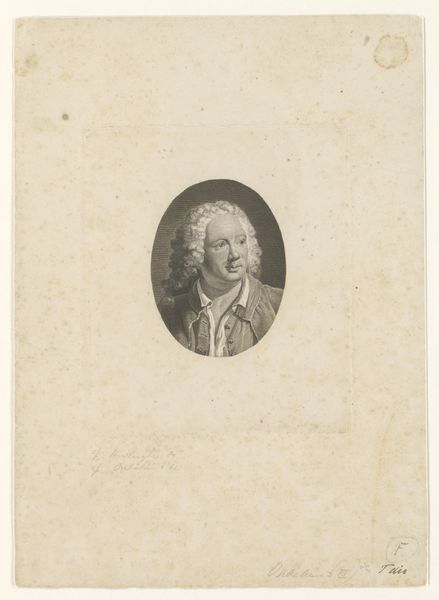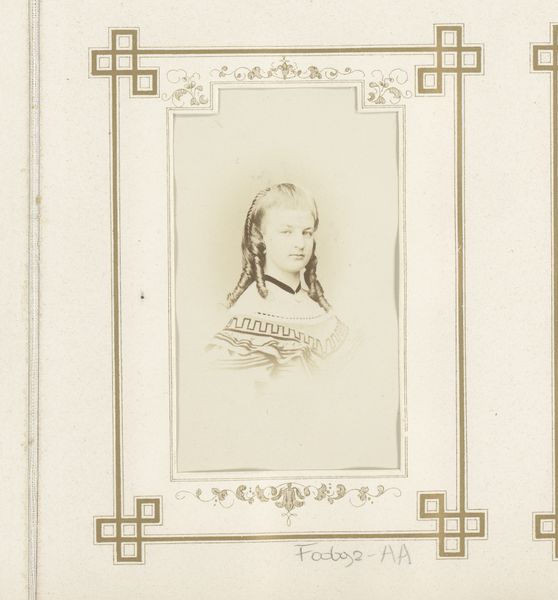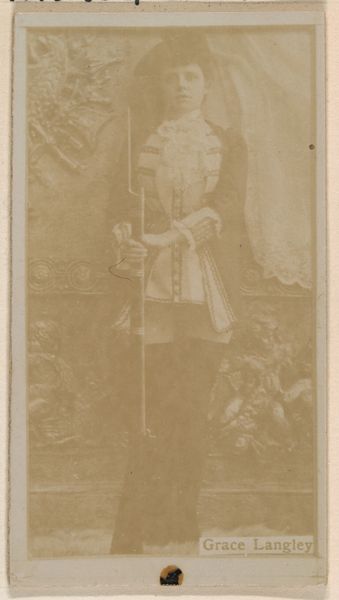
drawing, pencil, pen, engraving
#
portrait
#
drawing
#
neoclacissism
#
pencil
#
pen
#
engraving
Dimensions: height 343 mm, width 282 mm
Copyright: Rijks Museum: Open Domain
Curator: Here we have "Portret van Cornelis Ploos van Amstel," a work created between 1751 and 1798 by Noach van der Meer the Younger. The museum classifies it as a drawing, but it involves pen, pencil, and engraving. Editor: My first thought is this feels…curious. The subject seems almost presented on a stage, framed by that swag of ornamentation. It’s like a character stepped out of a play and then got pinned to the wall! Curator: That's interesting. It's typical of neoclassical portraiture to engage with established symbols and settings, elevating the subject within a frame of knowledge. Consider the specific materials; it shows not only drawing skills but reproduction capabilities. Van der Meer wasn’t just creating an image, he was creating a replicable one. This speaks volumes about the evolving social function of the portrait. Editor: So it is like mass-producing prestige, but I still feel that the portrait becomes slightly abstracted through all these tools and the overall design! But thinking about the process you describe, the etching needle literally shaping the identity in miniature… It's both distancing and deeply intimate. Curator: Precisely! And observe how implements like the artist’s palette and horn decorate the composition, celebrating skill but also perhaps pointing to van Amstel’s patronage of the arts, too. Consumption isn’t just the reception, but participation in a larger cycle. Editor: A circle that flattens a subject perhaps into a recognizable emblem. But what a pretty emblem, nonetheless. Curator: I would concur. The layered craftsmanship provides insight into how 18th-century society saw both art and those who shaped and sustained it. Editor: Makes you ponder about how those echoes bounce around, even now. A beautiful, strange little thing.
Comments
No comments
Be the first to comment and join the conversation on the ultimate creative platform.

